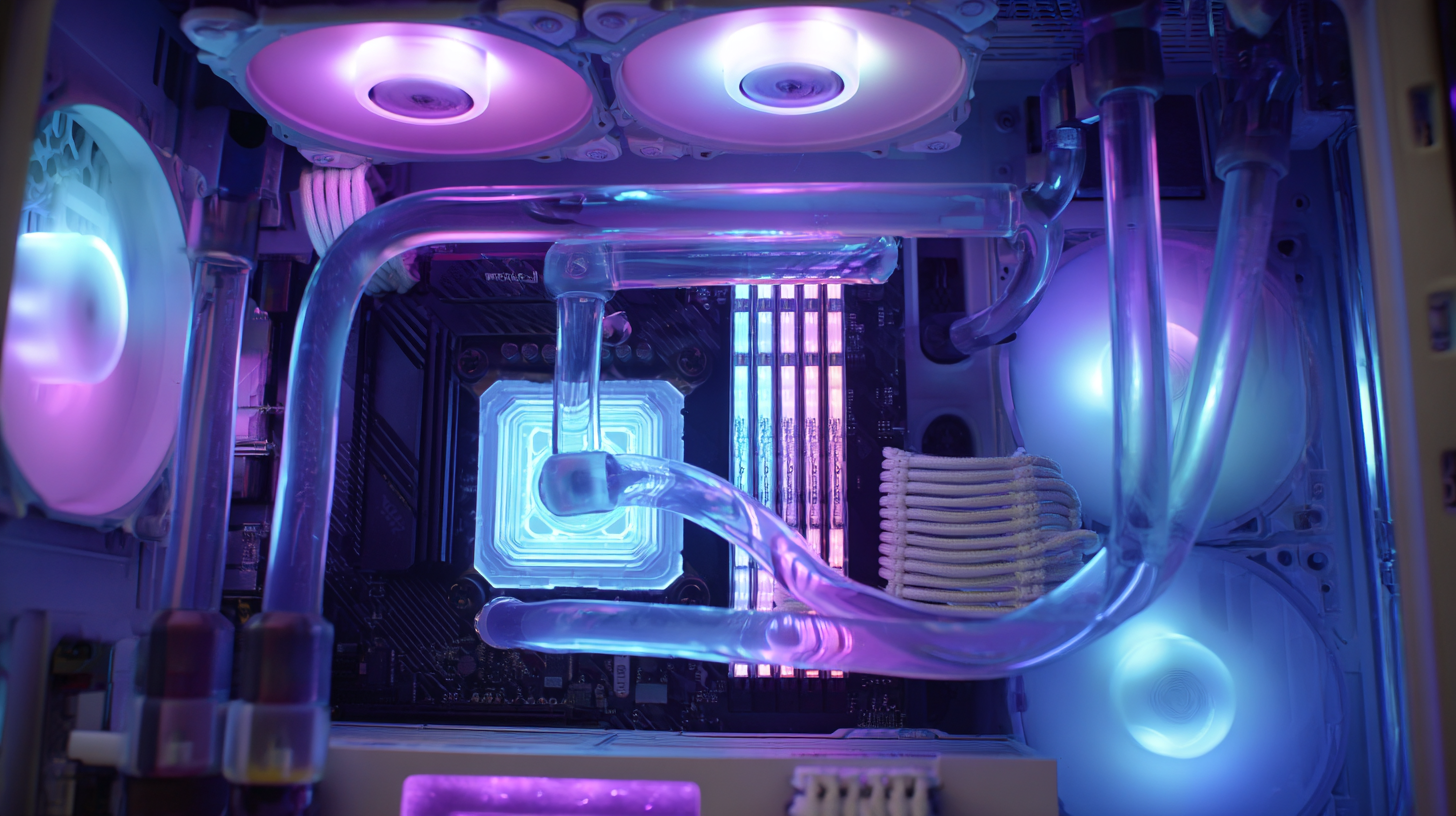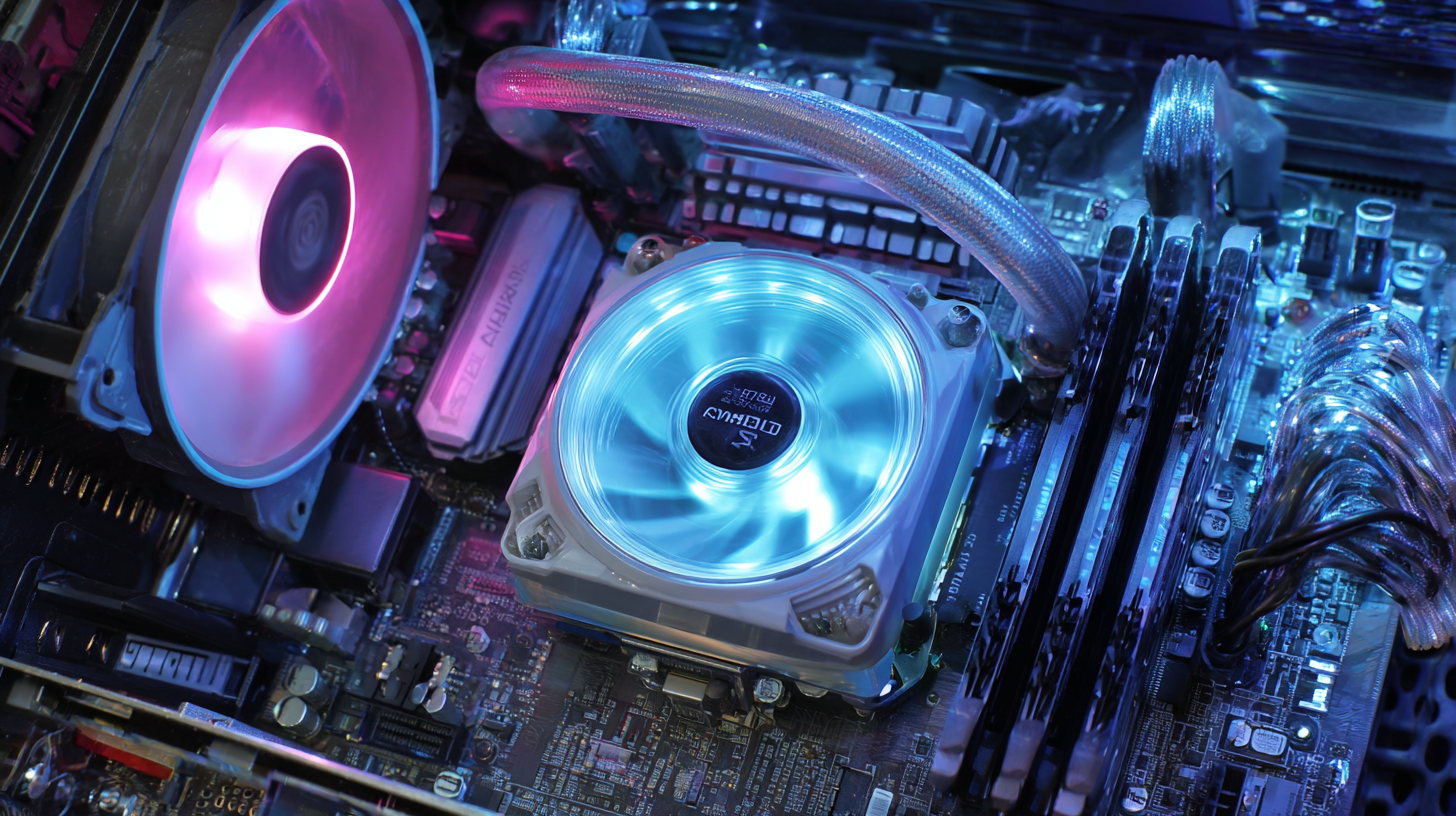Leave Your Message
- Phone
- E-mail
- Whatsapp


As we look towards 2025, the advancements in Aio Cooler Radiator technology are poised to redefine cooling efficiency in the computing industry. According to a report by Mordor Intelligence, the global cooling solutions market is expected to grow at a CAGR of 4.5%, driven by the increasing demand for high-performance computing systems and gaming rigs. With processors becoming more powerful, the need for effective thermal management solutions is critical, making Aio Cooler Radiator systems a top choice for enthusiasts and professionals alike. The integration of cutting-edge materials and innovative designs is likely to enhance heat dissipation and performance, setting new benchmarks in the industry. As manufacturers invest in research and development, the future of Aio Cooler Radiators appears bright, promising significant improvements in cooling capabilities and overall system performance.

In 2025, the evolution of All-In-One (AIO) cooler radiator technology has reached new heights, driven by an increasing demand for efficient cooling solutions in compact PC builds and high-performance gaming rigs. Manufacturers have innovated with advanced materials and designs that enhance thermal conductivity while minimizing size and weight. The utilization of graphene-infused radiators and improved liquid cooling fluids has significantly boosted heat dissipation capabilities, making AIO coolers more effective than ever before.

Moreover, the integration of smart technology in AIO systems has revolutionized user experience. With real-time monitoring and intelligent fan speed adjustments, users can maintain optimal temperatures with ease. Advanced algorithms predict thermal loads, allowing the cooling system to adapt dynamically, providing not just performance but also energy efficiency. As aesthetic appeal becomes increasingly important to gamers and PC builders alike, many AIO coolers now feature customizable RGB lighting and sleek designs, blending functionality with style in the highly competitive market of PC cooling solutions.
As we look towards the future of best AIO cooler radiator technology, it is essential to recognize the role of innovative manufacturing practices emerging from China. With its universities and domestic companies significantly enhancing their innovation capabilities, China is setting new standards in advanced industries. This progress aligns seamlessly with the rising trends in manufacturing, particularly in sectors like electric vehicles, where the country leads production globally. The integration of advanced technologies such as AI, IoT, and machine learning reflects a commitment to not only achieving high-performance products but also ensuring that sustainability remains at the forefront of development.
Furthermore, China's approach to manufacturing innovation extends beyond the automotive industry. The World Economic Forum has spotlighted initiatives that leverage AI to transform traditional processes, resulting in increased productivity and operational efficiency. These advancements not only enhance quality but also pave the way for the implementation of eco-friendly practices in the production of various goods, including cooling technologies. As AIO cooler radiators evolve, the influence of China's manufacturing revolution will play a crucial role in driving the industry forward, emphasizing the importance of sustainability and cutting-edge innovation in product design and functionality.
| Dimension | Description | 2025 Projected Trends | Innovative Practices |
|---|---|---|---|
| Material Composition | Use of advanced alloys and composites for weight reduction and thermal efficiency. | Increased use of lightweight materials by 30%. | Implementation of additive manufacturing techniques. |
| Cooling Efficiency | Enhanced heat dissipation methods for improved performance. | Projected efficiency gains of 25% over current models. | Integration of nanofluids in cooling systems. |
| Manufacturing Processes | Adoption of automated assembly lines and quality control measures. | Increase in automation rate to 70% in production facilities. | Utilization of AI for predictive maintenance in manufacturing. |
| Design Innovations | Focus on ergonomics and aesthetic appeal in radiator design. | Consumer preference shift towards customizable designs. | Collaboration with design firms for innovative aesthetics. |
| Sustainability Practices | Implementation of eco-friendly production processes. | Reduction of carbon footprint by 40% by 2025. | Use of recycled materials in radiator manufacturing. |
As we look ahead to 2025, the landscape of AIO (All-in-One) cooler radiator technology is set to undergo significant transformations. The next generation of AIO coolers will bring forth innovations that enhance cooling efficiency, aesthetics, and user-friendliness. One of the most anticipated features is the integration of advanced cooling fluids that boast improved thermal conductivity. These fluids will enable lower temperatures while minimizing noise levels, making them ideal for gamers and professionals who demand high performance with tranquility.
Another key feature is the incorporation of intelligent cooling algorithms. These smart systems will monitor CPU and GPU temperatures in real-time, automatically adjusting fan speeds and pump rates to optimize performance without user intervention. Additionally, the design of AIO coolers is likely to evolve, featuring customizable RGB lighting and sleek, modular structures that allow for easy installation and maintenance. These enhancements not only enhance thermal performance but also allow users to express their personal style, making AIO coolers a crucial component in building aesthetically pleasing and high-functioning PCs.
As data centers evolve to meet increasing computational demands, the debate between All-In-One (AIO) coolers and traditional cooling solutions becomes increasingly pertinent. AIO coolers, known for their liquid cooling efficiency, present a compelling alternative to traditional air cooling systems. A recent surge in hybrid cooling technologies highlights the effectiveness of combining air and liquid cooling, enabling data centers to better manage thermal loads while optimizing energy consumption. This approach not only enhances cooling performance but also minimizes the risk of overheating in high-density environments.
In contrast, traditional cooling solutions still play a critical role, particularly in scenarios where cost efficiency and deployment speed are paramount. However, as workloads become more complex and power-hungry, the limitations of air cooling technology are becoming evident. Innovations in liquid cooling designs, especially those utilizing cold plates, are rising to address these challenges. They demonstrate a shift in operational paradigms, allowing for improved thermal management and the potential to future-proof data center infrastructure against evolving technology demands. The competitive landscape for cooling solutions is undeniably shifting, with AIO coolers likely to take center stage in upcoming data center strategies.
As the demands for high-performance PCs continue to rise, efficient thermal management solutions are becoming increasingly critical. The global market for liquid cooling systems is projected to grow from $2.5 billion in 2021 to approximately $6 billion by 2025, reflecting an annual growth rate of over 20%. This rapid expansion can be attributed to the need for effective heat dissipation in CPUs and GPUs which are now designed to operate at higher clock speeds and power outputs. Advanced AIO (All-In-One) cooler radiators are at the forefront of this technology, as they combine high efficiency with ease of installation, making them the preferred choice for gamers and professionals alike.

Recent trends in thermal management indicate a shift toward more sustainable and innovative solutions. For instance, the integration of smart sensors in AIO cooler radiators allows for real-time temperature monitoring and adjustment, promoting optimal system performance. Furthermore, the move towards eco-friendly refrigerants aligns with the industry’s increasing focus on sustainability, with reports suggesting that products utilizing these environmentally safe materials could see a 15% increase in market demand by 2026. These innovations not only enhance cooling efficiency but also contribute to overall energy savings, making them a notable trend in the future of high-performance PC thermal management.
